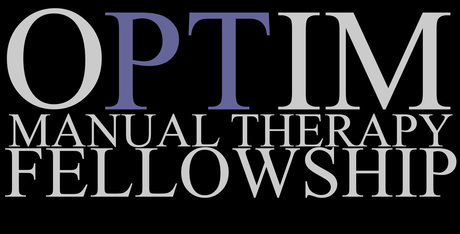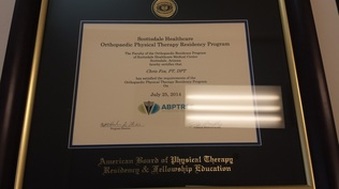- Home
- About Us
- TSPT Academy
- Online Courses
-
Resources
- Newsletter
- Business Minded Sports Physio Podcast
- Day in the Life of a Sports PT
- Residency Corner
-
Special Tests
>
-
Cervical Spine
>
- Alar Ligament Test
- Bakody's Sign
- Cervical Distraction Test
- Cervical Rotation Lateral Flexion Test
- Craniocervical Flexion Test (CCFT)
- Deep Neck Flexor Endurance Test
- Posterior-Anterior Segmental Mobility
- Segmental Mobility
- Sharp-Purser Test
- Spurling's Maneuver
- Transverse Ligament Test
- ULNT - Median
- ULNT - Radial
- ULNT - Ulnar
- Vertebral Artery Test
- Thoracic Spine >
-
Lumbar Spine/Sacroiliac Joint
>
- Active Sit-Up Test
- Alternate Gillet Test
- Crossed Straight Leg Raise Test
- Extensor Endurance Test
- FABER Test
- Fortin's Sign
- Gaenslen Test
- Gillet Test
- Gower's Sign
- Lumbar Quadrant Test
- POSH Test
- Posteroanterior Mobility
- Prone Knee Bend Test
- Prone Instability Test
- Resisted Abduction Test
- Sacral Clearing Test
- Seated Forward Flexion Test
- SIJ Compression/Distraction Test
- Slump Test
- Sphinx Test
- Spine Rotators & Multifidus Test
- Squish Test
- Standing Forward Flexion Test
- Straight Leg Raise Test
- Supine to Long Sit Test
-
Shoulder
>
- Active Compression Test
- Anterior Apprehension
- Biceps Load Test II
- Drop Arm Sign
- External Rotation Lag Sign
- Hawkins-Kennedy Impingement Sign
- Horizontal Adduction Test
- Internal Rotation Lag Sign
- Jobe Test
- Ludington's Test
- Neer Test
- Painful Arc Sign
- Pronated Load Test
- Resisted Supination External Rotation Test
- Speed's Test
- Posterior Apprehension
- Sulcus Sign
- Thoracic Outlet Tests >
- Yergason's Test
- Elbow >
- Wrist/Hand >
- Hip >
- Knee >
- Foot/Ankle >
-
Cervical Spine
>
- I want Financial Freedom
- I want Professional Growth
- I want Clinical Mastery
 One of the hardest things to do in the clinic is to regularly practice things at which you are uncomfortable or less skilled. Most physical therapists work a busy day with patients and have notes to complete afterwards. The desire to do anything PT-related outside of those obligations can be exhausting. What we must do as clinicians, if we are to regularly improve, is reflect upon our weaknesses. They often can be difficult to identify, because we think we are examining our patients as efficiently and effectively as possible. But what lies unknown remains unknown. An easy way to start reviewing weakness is selecting techniques or other aspects of care with which you are less successful. Maybe it includes a lumbar manipulation or educating a patient on pain science. A more difficult weakness to identify is that which you are unaware is occurring. There are a couple methods of reflection I like to use for these. One is to review groupings of patients that have had less than optimal outcomes with your care. Maybe there is something else that should be included in managing the patient? Another method is to regularly review other PT blogs or courses that may point out examination or treatment techniques with which you have less experience. So how do we manage these things? For the technique or education aspects, it is simple - practice. To develop an expertise level at something, it requires lots and lots of practice. This is easier said than done for some things. For example, if you want to practice lumbar segmental mobility assessment, you can perform this on every one of your lower quarter patients. You will know more than almost every one of your patients, so go ahead and practice assessment techniques. You will notice differences between tissues and segments far more easily over time. Now, certain treatment techniques should not be practiced on patients as liberally. For example, cervical manipulations carry some level of inherent risk, so it is essential the clinician already have sufficient skill when performing. These sorts of techniques should be practiced for prolonged periods outside of patient care before performing on patients. For more non-technical aspects, it may benefit from some form of peer discussion or mentoring. As we've said many times before, it helps to have multiple perspectives in clinical development. Someone may have had some other success or experience that could benefit you in the future. Regardless of how you work on your weakness, it is important that we take the time to identify them and then address them. -Chris
Like this post? Then check out the Insider Access Page for advanced content! And check out similar posts below!
0 Comments
Leave a Reply. |
Dr. Brian Schwabe's NEW Book in partner with PaleoHacks!
Learn residency-level content on our
Insider Access pages We value quality PT education & CEU's. Click the MedBridge logo below for TSPT savings!Archives
July 2019
Categories
All
|









 RSS Feed
RSS Feed